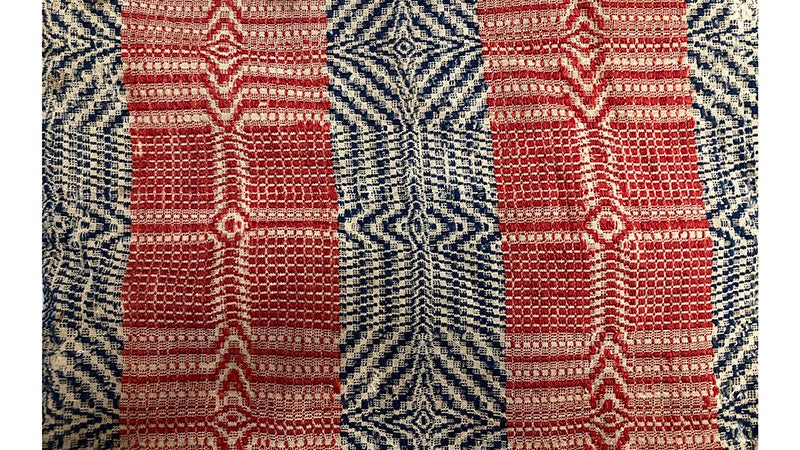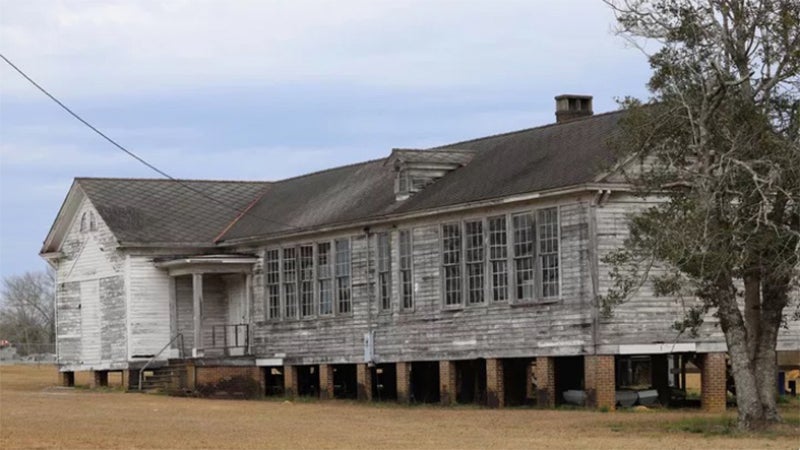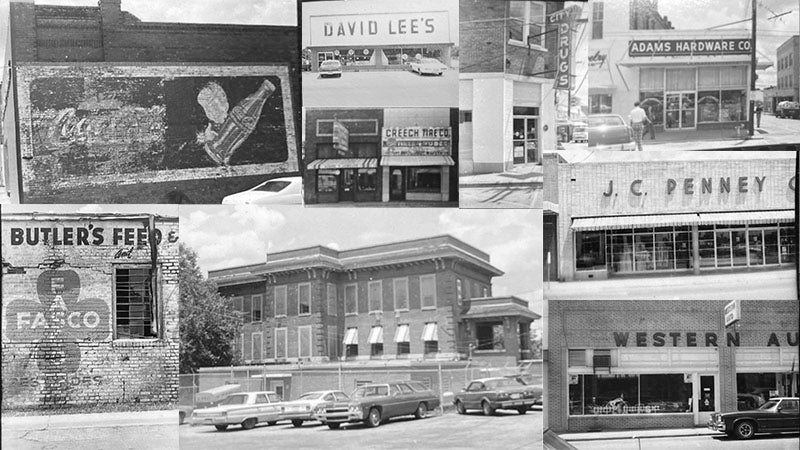Remember when: Folk movement led to hootenannies
Published 12:00 am Saturday, August 13, 2016
“Michael row the boat ashore, Halleluia; Sister helped to trim the sail, Halleluia; The river is deep and the river is wide, Halleluia…” This folk song has been around for many years – passed down by word of mouth into the annals of history. Folk music is simply what the people sing, what folks sing! The categories of American folk songs are many – work songs, sea shanties, river songs, railroad songs, cowboy songs, spirituals, regional songs. Folk songs evolved by oral transmission performed by custom over a long period of time. American “roots music” later developed in the U.S. includes bluegrass, gospel, Appalachian, Cajun, Native American which served as a basis for music later developed in America – rock and roll, rhythm and blues, and jazz.
 A folk revival in America reached a zenith in the 1960s. Hootenannies were popular gatherings in the area. Folk singers and their music became the “craze.” Many teenagers took up guitar playing. Saturday nights at the local hangouts such as “The Big R” on River Falls Street included groups of boys and girls singing their hearts out to songs they heard on the radio and the popular albums. The Brothers Four, The New Christy Minstrels, The Highwaymen, and Peter, Paul and Mary revived this folk song above and brought it to the top of the pop charts.
A folk revival in America reached a zenith in the 1960s. Hootenannies were popular gatherings in the area. Folk singers and their music became the “craze.” Many teenagers took up guitar playing. Saturday nights at the local hangouts such as “The Big R” on River Falls Street included groups of boys and girls singing their hearts out to songs they heard on the radio and the popular albums. The Brothers Four, The New Christy Minstrels, The Highwaymen, and Peter, Paul and Mary revived this folk song above and brought it to the top of the pop charts.
It has been about thirty years since local columnists have written about Prestwood Bridge over the Conecuh River. I crossed it the other day going to look at some property in the “boonies,” and a lot of remembrances and local folklore that I heard from other citizens, some dead and gone, came to mind. Another generation of young people just might be interested in this story of such a popular landmark even today.
Mr. Joseph Wingard shared a story that the late James M. Prestwood wrote about. Here are a few excerpts from that Dec. 5, 1985 Andalusia Star News article: “The (Prestwood) bridge (built in 1925) was steel and wood designed by engineers to support foot traffic of people and animals desiring to cross a turbid river stream beneath. It allowed wagons, buggies, trucks, passenger vehicles, and school buses, in that order, to go about their appointed duties. …The impressive bridge marked a special site on the river that has floated millions of board feet of virgin pine logs to the Pensacola market. Before the bridge was constructed, long before, people gathered at that point, camped on the sand bars, fished there, and had fish fries; they swam there. People were baptized in those waters. Choral groups sang gospel songs; fiddlers held contests there.”
“Then came the bridge; it was magnificent, a thing to boast about. On the opening day, there were speeches, coffee, lemonade, and camp stew. That was on a Saturday. On the following Monday, a large drove of cattle was to be driven across the new span on to Andalusia for shipment to the market. Everyone knew the height of the bridge would spook the cattle and make the horses nervous. …The cowboys were apprehensive. Many predictions were made by onlookers. Everyone agreed that the owner of the cattle was taking a foolish risk. The lead horse reared as he entered the bridge. The cattle balked and swerved to the right in a wild stampede. The leader of the drive was a trifle panicky himself, because that herd was his.”
“An old logger who lived in a one-room shack down the road walked up to the owner and said that he could get the cattle across the bridge with Felton’s help. The owner said, ‘Where is Felton?’ The logger replied, pointing to a goat, ‘This is Felton!’”
To make a long story short, the cattle followed Felton across the bridge and the old logger tipped the brim of his hat and said, “I’ll learn you something about goats! Cattle will follow him anywhere. He sleeps in the shack with me. We’re friends.”
The owner asked, “Will you bring Felton when I need him again?”
The logger replied, “I reckon unless it’s real cold. On extra cold days, Felton don’t like to work.”
“The logger was fairly paid and thanked for his services,” Prestwood wrote.
Through the years, tragedy struck harsh blows to many families as drownings occurred there at the bend of the river where people were swept away by swift currents.
James Prestwood’s grandfather took his firstborn son, Millard Prestwood, to the river to teach him to swim.
“Millard walked into the shallows, feeling safe, when he stepped into a hole and was swept under by the currents and beyond the power of my grandfather to save him. The tragedy struck a harsh blow to the Prestwood family. My grandfather never ceased to blame himself. Millard was 12 years old. It was June 14, 1891.”
“In 1922,” Prestwood further wrote, “at the East Three Notch Grammar School, there was a student named John Dent Stewart whose desk was next to mine. One Sunday afternoon, John Dent and some of his friends rode their bikes to the river to go swimming. John Dent drowned in Millard’s Cove….His empty desk haunted us – especially me. After what seemed like months, his body was recovered and his classmates attended his funeral en masse.”
“This bend in the river that creates treacherous currents intrigued people of all ages. No one knows just why. There are countless stories about this point where the bridge was constructed. The area is enswathed in local history. The bridge became a landmark.”
Born in 1903, the late Berta McArtan Cook recalled, “I was scared to death to ride over Prestwood Bridge in an automobile, because it made so much noise.”
She continued with the fondest of memories, “We used to have Sunday School picnics down there. All the Presbyterians would gather for an all-day affair. They always carried a big spread. Down there on that side of the bridge where it was real steep, we would slip and slide. All the young ones and some of the old ones would go in swimming. We wore those bathing suits that were long and big, not like the ones today. You know, there’s just not any pride left today! I believe those Sunday School parties were about when I was 10 or 11. That would be about 1913 or 1914.”
Wingard, the genius of storytelling to his classes of high school students, especially ghost stories, reported that “people used to set fires in the middle of the old bridge in attempts to destroy it. Also, teenagers speak of the ‘Old Lady of Prestwood Bridge.’ They would drive to the bridge, turn off their car lights, honk the horn, and wait for her to come out of the woods and scratch at their car. She was supposed to have been old, ugly, and mean.”
After all, this spot on the Conecuh was only a short distance from Montezuma. It is said that the Montezuma cemetery was up the river just a stone’s throw away from the bridge site.
My aunt Carolyn Brunson Caton told me once, “In about 1934 when I was 16 years old and a junior at AHS, I wrote my boyfriend Bethea (Fay) Caton, a student at Auburn University at the time, about an experience I and some of my friends had down at the bridge. It was around Halloween, and I had asked some of my classmates to ride down to the bridge that night. Daddy let me use his brand new Chevrolet. I was going to have fun taking them down there, I thought. These were my best friends at the time – Margaret Everage, Audie Rae Wallace’s sister; Margaret Bond, Charlotte O’Neal’s sister; and Josephine Maddox who later married Claude Baldwin, Jr. whose father was Superintendent of the Central of Georgia Railroad office in Andalusia. Well, we got halfway across the bridge in the car when we realized that the other end was seemingly floating off to the left. The side of the bridge we were on was just left hanging. The other side was totally under water. They weren’t afraid as I was, because I was driving. Somehow we backed up and got off that thing. I told my daddy about it, and the next day he carried me down there and showed me how close we came to drowning in the rough currents. That ended my career of ever frightening anybody again. Even today I get chills when I think of the car lights shining on the swift currents. It just wasn’t our time to go!”
Near Prestwood Bridge was a lover’s lane that some called “Tiger Alley.” Well, Ray and Irene Butler were married on March 22, 1943. That same night they rode to Prestwood Bridge with some friends, Curtis and Ann Lee, because they heard it was real “romantic” down there. The water was up real high. In all the excitement as they were proceeding down Dunson Street on the way to the bridge, they nearly ran into a parked car. To avoid hitting it, Ray swerved up onto the sidewalk and afterward, they continued on to view the bridge in the moonlight! This information was obtained in a November 1985 in an interview with Ray and Irene!
Around that same time (1985), spectators gathered up the hill from the bridge to watch attempts to fly the historic bridge from its resting place over the past 60 years to the county yard to be dismantled and sold for scrap. A U. S. Army Chinook Chopper from Fort Rucker tried twice, but the old bridge was dropped into the river upside down. Because the bridge was not properly maintained with paint and protection against the elements over the 60 years, it was no longer structurally sound and was unsafe for vehicular traffic. We don’t know if any descendants of the old goat, “Felton,” were on hand to view the event! But practically the whole town was.
The Covington County Commission had hoped that if the work could have been accomplished, according to John M. Weed, Chairman, in a letter of request to the 46th Engineers Division at Fort Rucker, it would save the citizens approximately 1.2 million dollars. The project of moving the old bridge closed to traffic a few years before would have allowed a new bridge to be built giving people living west of Andalusia direct access to the city. “The best laid schemes of mice and men…” A new bridge was eventually built over the 140 foot span! Check out the picture of the old bridge at the Three Notch Museum.
Jimmy Wilson, a member of the AHS Class of 1964, remembers that in the spring of 1963, a load of classmates rode to Prestwood Bridge in his 1952 Ford pickup to get moss and driftwood to decorate for the Jr./Sr. Prom. The theme that year was “Harvest Moon.” A footnote to this anecdote was that that was the year the prom story made headlines all over the country over the AP wires! Thanks juniors, because the next year’s prom, we juniors had more chaperones than students! And the beat goes on with colorful stories we might want to forget! It’s always an eye-opener here in “the dimple of Dixie” to REMEMBER WHEN!





